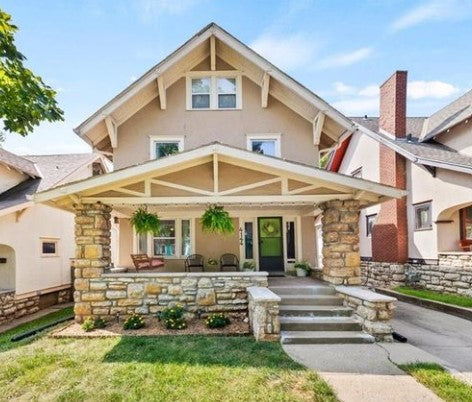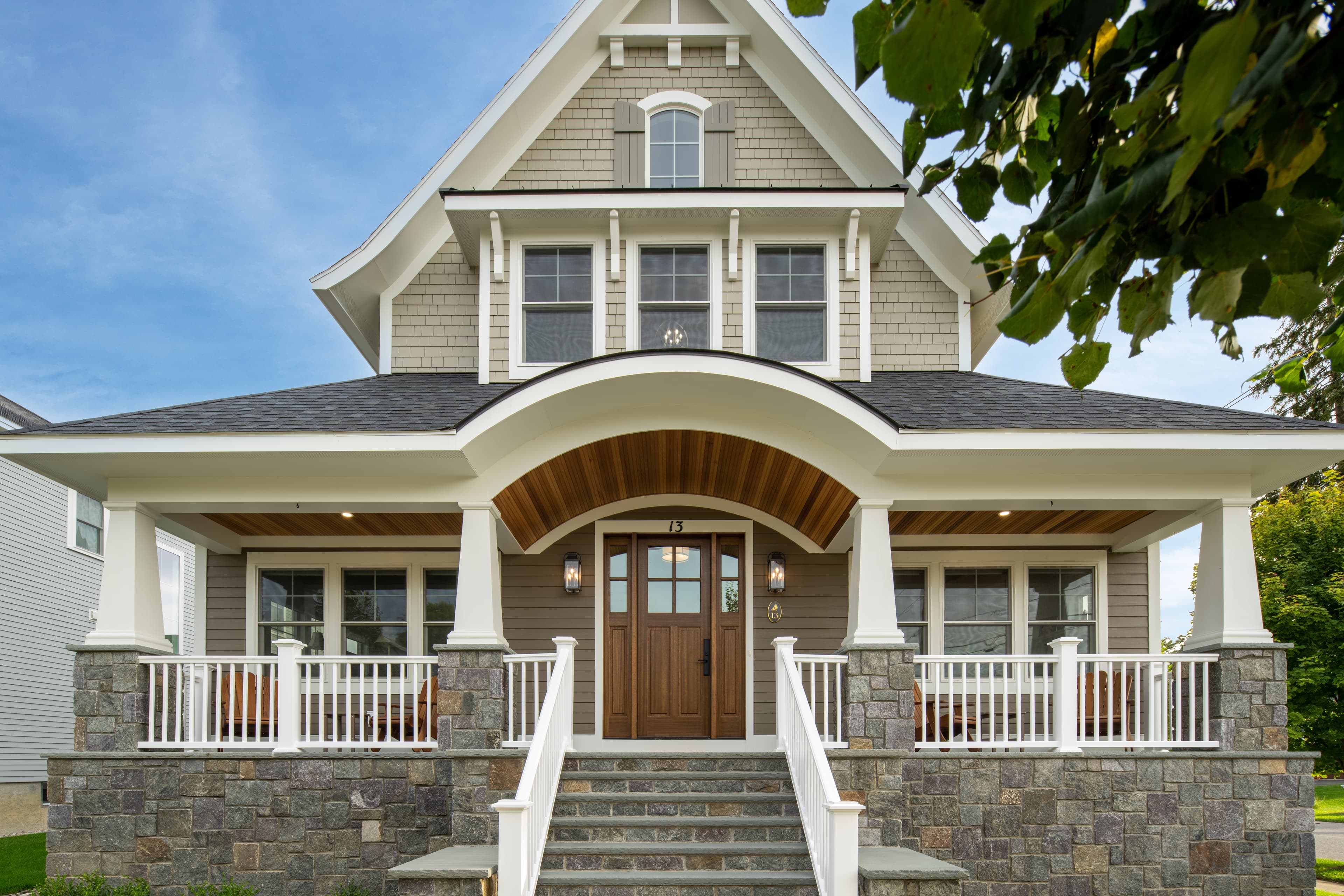A Guide to Finding the Right Architectural Style If You’re Considering a craftsman style house
The Role of Arts & & Crafts Architects in Elevating Architectural Services in Residential Design
Arts and Crafts architects significantly influence residential design through their dedication to workmanship and sustainability. They focus on handmade details and natural materials, which boost both visual appeals and community identity. By involving clients in the layout procedure, these architects produce distinct space that resonate with individual preferences. This technique elevates inquiries regarding the future trajectory of domestic architecture and its potential influence on area characteristics. craftsman style house. What lies in advance for this classic style viewpoint?

The Concepts of Arts and Crafts Architecture
The significance of Arts and Crafts architecture hinges on its commitment to craftsmanship and simplicity. This architectural motion arised in the late 19th century as a reaction to automation, stressing the worth of handcrafted details and natural products. The concepts of Arts and Crafts architecture prioritize functionality and harmony with the setting. Frameworks usually include low-pitched roof coverings, vast eaves, and revealed rafters, advertising a sense of unity with nature.
Artisans played a considerable duty in this design, often incorporating ornamental elements like tarnished glass, ceramic tiles, and woodwork, which show local workmanship. The color palette has a tendency to be natural and suppressed, allowing buildings to mix perfectly right into their surroundings. On top of that, the style urges open floor strategies and common spaces, fostering a feeling of togetherness. On the whole, the concepts of Arts and Crafts architecture commemorate the charm of simplicity and the value of human link to both nature and neighborhood.

Lasting Practices in Residential Design
While the need for eco accountable living continues to grow, lasting methods in domestic design have actually obtained considerable traction amongst architects and home owners alike. Architects are progressively incorporating energy-efficient technologies and lasting materials right into their styles, aiming to reduce carbon footprints and improve energy preservation. Methods such as passive solar layout, eco-friendly roofings, and rainwater harvesting systems are becoming standard parts of modern property architecture.
The choice of in your area sourced materials decreases transportation discharges and sustains regional economies. Focus on all-natural light and air flow not only enhances interior air top quality but likewise decreases dependence on synthetic illumination and climate control systems. These lasting methods show a dedication to protecting the environment while offering house owners with comfy, reliable home. As awareness of environmental issues grows, the integration of sustainability in property style is positioned to come to be a defining quality of modern architecture, guided by the principles developed by Arts and Crafts architects.
Personalization and Customization in Home Layout
Customization and customization in home layout have actually arised as essential trends in feedback to the growing desire for distinct living settings that show individual tastes and way of lives. House owners progressively seek to customize areas that resonate with their individualities, resulting in a much more purposeful link with their home. craftsman style house. This activity motivates architects to engage clients in the layout procedure, fostering collaboration that assures the final outcome embodies the house owner's vision
Aspects such as bespoke layouts, custom products, and tailored finishes permit a diverse variety of expressions in household style. Arts and Crafts architects play a critical role in this advancement, emphasizing craftsmanship and quality. Their concentrate on integrating imaginative aspects with functionality assurances here are the findings that each home is not only cosmetically pleasing however additionally distinctively suited to the citizens' requirements. Consequently, this focus on customization boosts the overall residential experience, developing rooms that are both individual and enduring.

The Impact of Arts and Crafts Architects on Community Looks
As areas advance, the impact of Arts and Crafts architects greatly forms their visual landscape. By stressing handmade details, all-natural products, and standard building techniques, these architects produce homes that resonate with their environments. Their designs often incorporate neighborhood flora, appearances, and colors, cultivating a sense of consistency in between developed settings and nature.
Additionally, the Arts and Crafts activity promotes area identity with building continuity. By encouraging homeowners to take on comparable design principles, areas establish a natural character that boosts visual charm. This building harmony not only enhances the visual experience yet also imparts a feeling of satisfaction amongst locals.
Moreover, the emphasis on sustainability and craftsmanship in Arts and Crafts architecture lines up with contemporary worths, making these layouts relevant in contemporary settings. Ultimately, Arts and Crafts architects contribute significantly to the total elegance and social honesty of communities, leaving a lasting effect on their aesthetic tradition.

Future Trends in Arts and Crafts Architecture
With an increasing focus on sustainability and customization, future patterns in Arts and Crafts architecture are Continued poised to mix traditional workmanship with modern-day technology - craftsman style house. Architects are most likely to prioritize eco-friendly materials, using recovered timber and all-natural stone to enhance the sustainability of domestic styles. The assimilation of wise home innovation will become typical, enabling customized living experiences without compromising visual stability
The revival of artisanal techniques will certainly cultivate a restored recognition for handcrafted aspects, such as bespoke kitchen cabinetry and personalized tile job. Future styles might likewise show a focus on community-oriented spaces, motivating interaction and link among residents. Exterior living areas will certainly acquire prestige, flawlessly integrating nature right into the home atmosphere. As Arts and Crafts architecture advances, it will certainly continue to recognize its roots while adapting to contemporary demands, creating unified areas that mirror private values and way of lives.
Regularly Asked Questions
What Motivated the Arts and Crafts Movement in Architecture?
The Arts and Crafts movement in architecture was motivated by a response versus industrialization, highlighting handcrafted high quality, all-natural products, and a go back to traditional workmanship, intending to develop unified, functional areas that commemorated creativity and originality.
Just how Do Arts and Crafts Architects Collaborate With Clients?
Arts and crafts architects collaborate with clients through open discussion, prioritizing personal demands and looks. They stress workmanship and sustainability, promoting a partnership that integrates the customer's vision with the designer's knowledge in design and products.
What Materials Are Generally Used in Arts and Crafts Residences?
Usual products in Arts and Crafts homes include all-natural wood, stone, and brick, stressing workmanship and organic looks. These aspects develop a cozy, inviting environment, reflecting the movement's dedication to high quality and simpleness in layout.
How Do Arts and Crafts Styles Improve Indoor Living Areas?
Arts and Crafts layouts boost indoor living areas by promoting natural light, open floor plans, and handcrafted information. These components promote a warm, inviting atmosphere, urging a link between citizens and their environments via thoughtful, useful looks.
What Are Some Famous Instances of Arts and Crafts Architecture?
Famous instances of Arts and Crafts architecture include the Wager Home, Greene and Greene's pop over here work of art in The golden state, and the Robie Home by Frank Lloyd Wright. These structures showcase handcrafted information and consistency with nature, specifying the movement's significance.